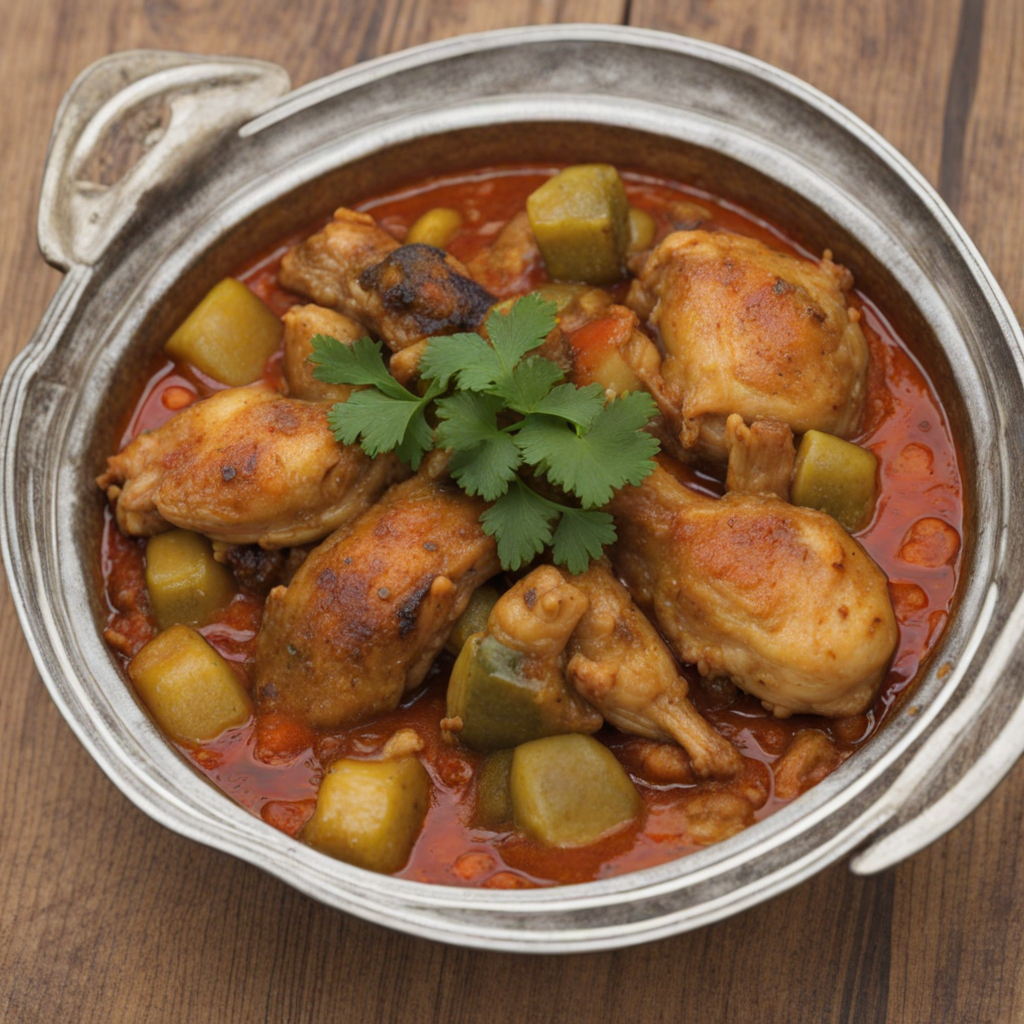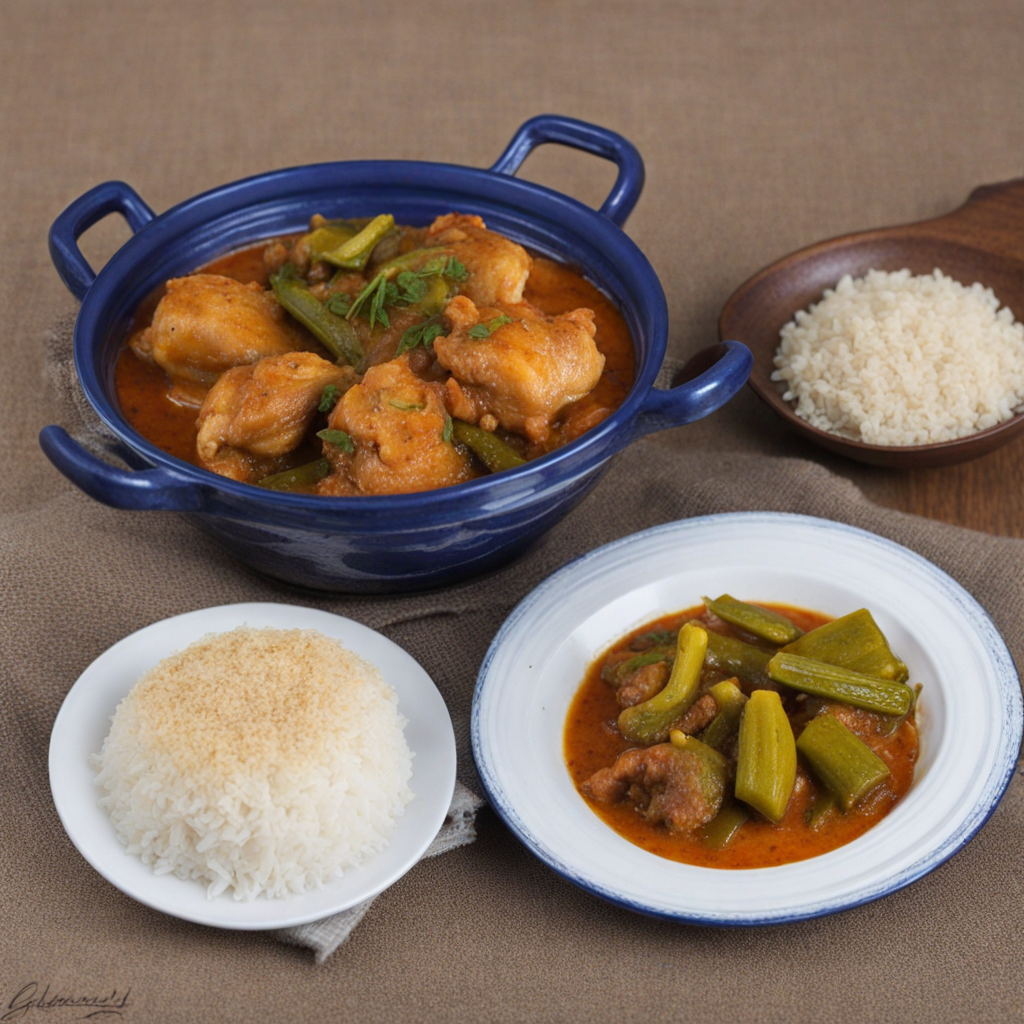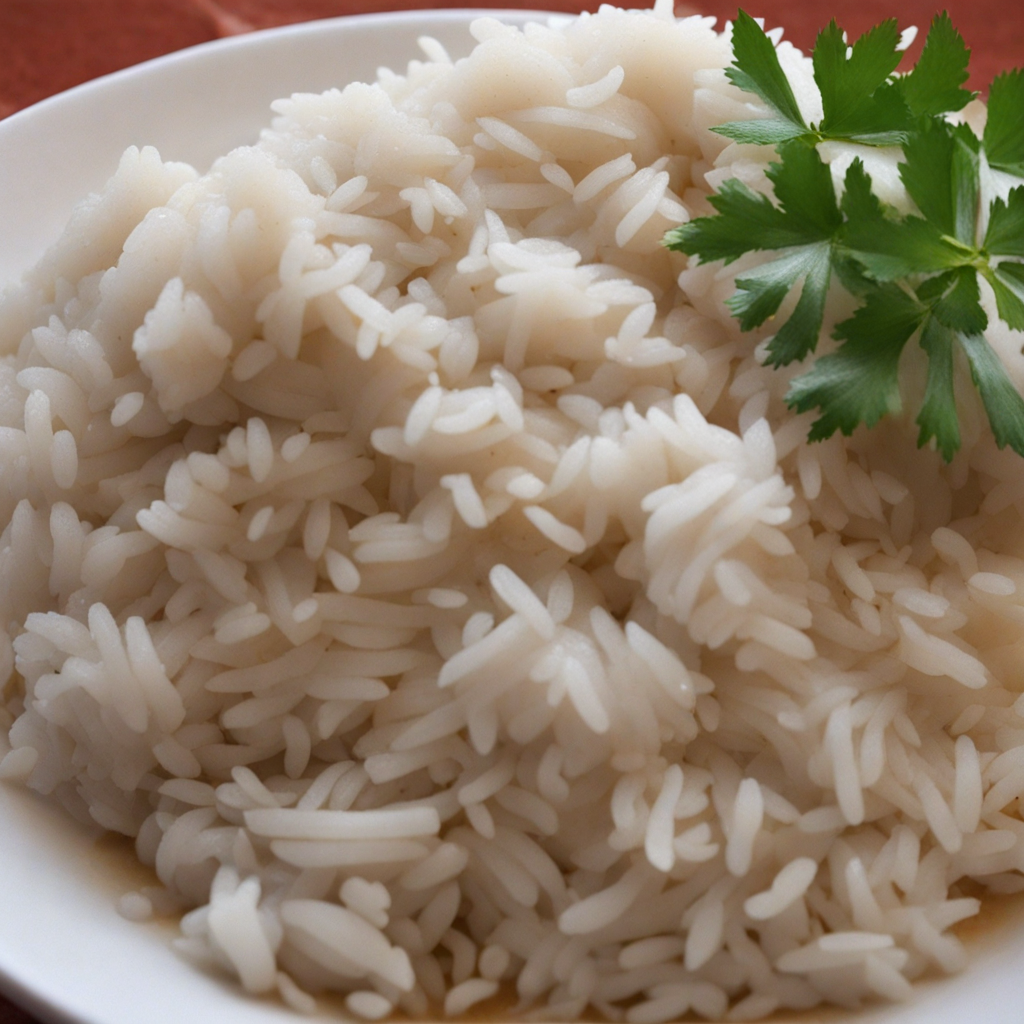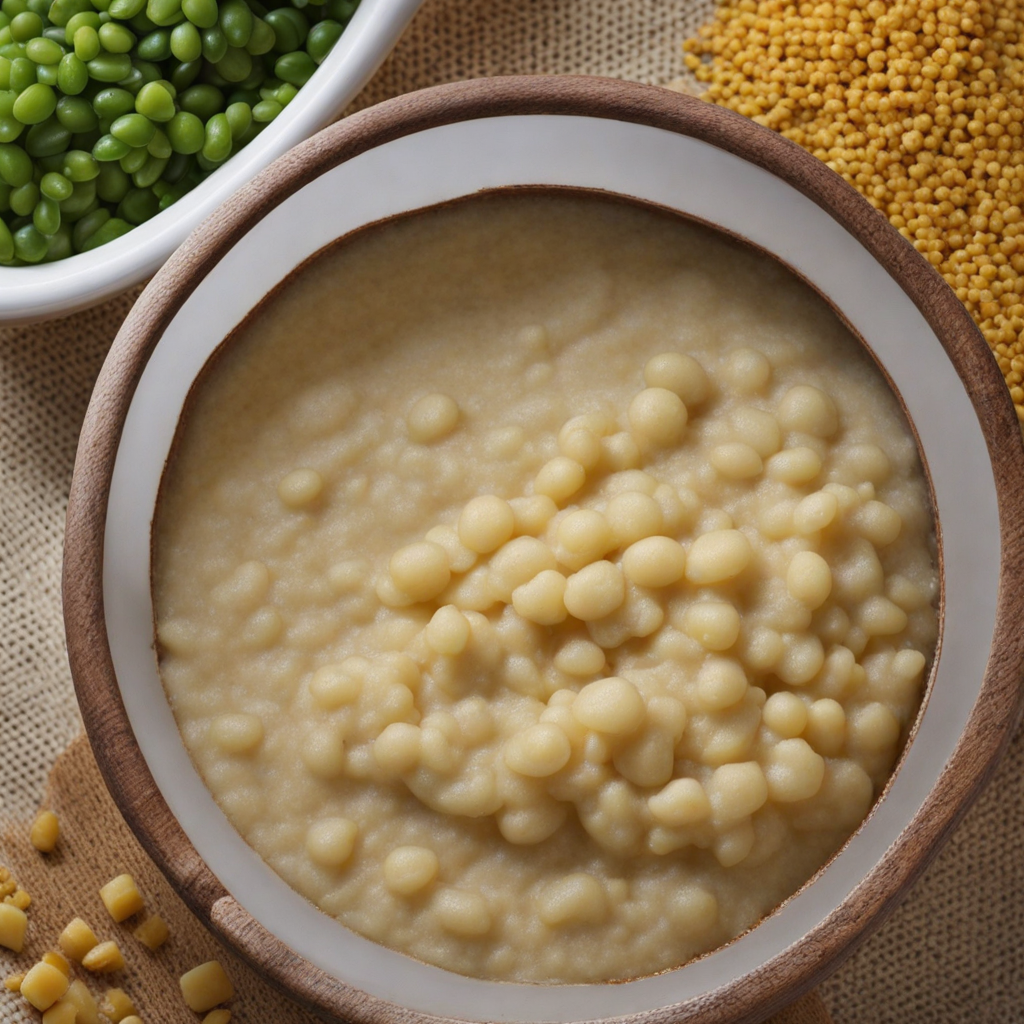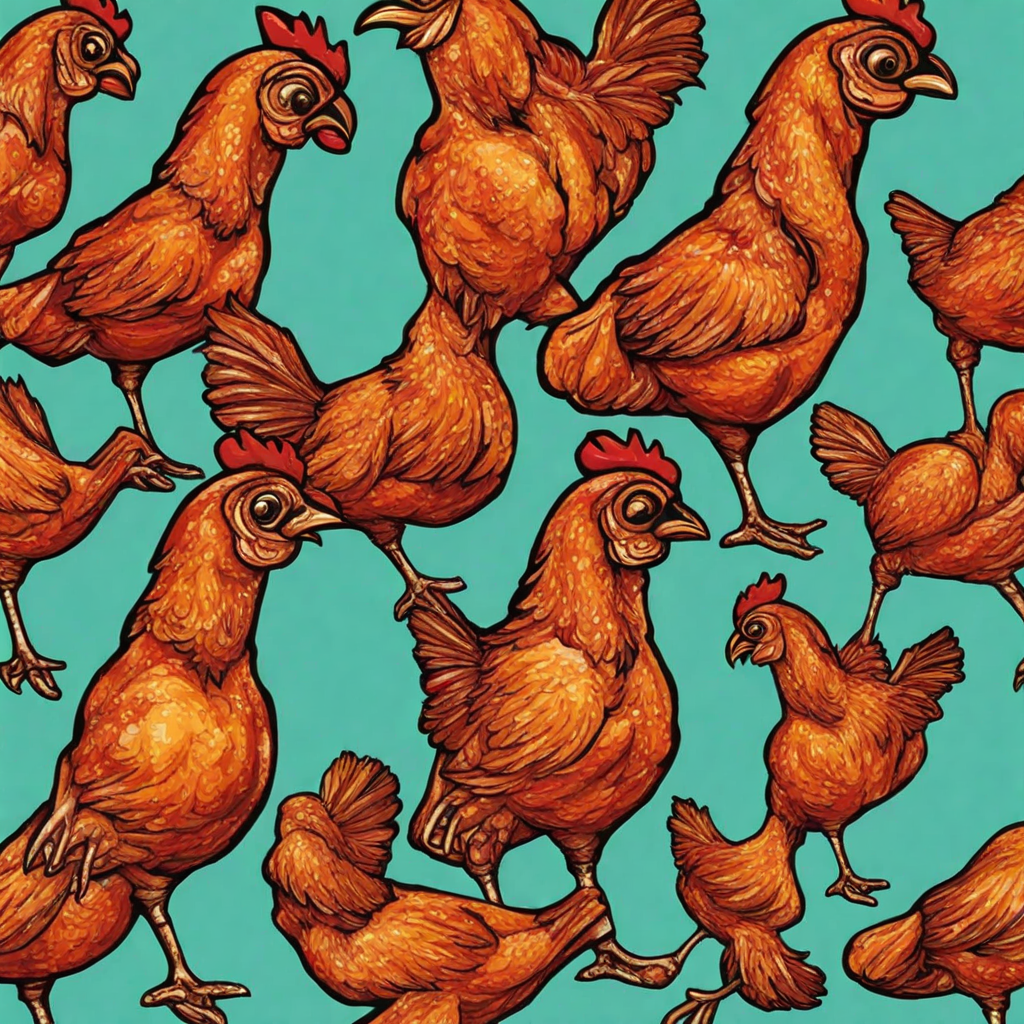Chicken Muamba
Chicken Muamba is a vibrant and hearty dish that originates from Mozambique, showcasing a harmonious blend of flavors and textures that captivate the palate. The star of the dish is succulent chicken, often marinated with a medley of spices before being slow-cooked to perfection. The marinade typically includes garlic, ginger, and a variety of local spices that lend the chicken a fragrant and aromatic quality. As the dish simmers, the chicken absorbs the rich flavors, resulting in tender meat that practically falls off the bone. One of the defining features of Chicken Muamba is its signature sauce, made from ground peanuts or peanut butter, which adds a creamy, nutty richness to the dish. The sauce is further enhanced with tomatoes, onions, and sometimes a splash of palm oil, creating a vibrant color and a depth of flavor that is both comforting and satisfying. This combination not only elevates the chicken but also makes it an excellent accompaniment to rice or a traditional maize porridge, allowing diners to fully enjoy the luxurious sauce. Accompanying the dish are often vegetables like spinach or okra, which not only add nutritional value but also provide a lovely contrast in texture. The earthiness of the peanuts, combined with the freshness of the vegetables, makes Chicken Muamba a well-rounded meal that embodies the essence of Mozambican cuisine. Each bite offers a delightful experience, as the flavors meld together, telling a story of the rich culinary heritage of Mozambique, inviting food lovers to savor something truly unique and delicious.
How It Became This Dish
Muamba de Galinha: A Culinary Journey Through Mozambique’s History Muamba de Galinha, a traditional dish from Mozambique, is more than just a meal; it is a vibrant tapestry of cultural influences, historical narratives, and social significance. This simple yet flavorful chicken stew, characterized by its rich sauce made from palm oil, spices, and vegetables, encapsulates the spirit of Mozambique—a country shaped by centuries of trade, colonization, and cultural fusion. Origins The roots of Muamba de Galinha can be traced back to the indigenous peoples of Mozambique, particularly the Bantu-speaking communities who inhabited the region long before the arrival of European powers. These communities cultivated crops such as cassava, maize, and various legumes, which formed the backbone of their agricultural practices and diet. The introduction of chicken into the local cuisine likely occurred with the Bantu migrations and settlements, which brought with them domesticated animals. As the centuries progressed, Mozambique became a critical hub in the Indian Ocean trade network. Arab and Swahili traders established trading posts along the coast, introducing new ingredients and culinary techniques. Spices, such as black pepper, coriander, and cumin, found their way into local kitchens, enriching the flavor profiles of traditional dishes. The dish we now know as Muamba de Galinha began to take shape during this period, blending indigenous ingredients with those brought by foreign traders. Colonial Influences The arrival of the Portuguese in the late 15th century marked a significant turning point in Mozambique’s culinary landscape. The Portuguese colonial period, which lasted for over four centuries, introduced new ingredients such as tomatoes, garlic, and piri-piri (a type of chili pepper). These ingredients would eventually become staples in the preparation of Muamba de Galinha. The Portuguese influence is particularly evident in the cooking techniques employed in the dish. The use of palm oil, a key ingredient in Muamba de Galinha, reflects the African tradition of cooking with oil, while the addition of tomatoes and spices showcases the blend of European culinary practices with local ingredients. This fusion resulted in a dish that was hearty, flavorful, and reflective of the diverse influences that shaped Mozambique’s culinary identity. Cultural Significance Muamba de Galinha is not just a dish; it is a symbol of Mozambican culture and hospitality. Traditionally, it is served at family gatherings, celebrations, and important ceremonies, highlighting its role in social bonding and community cohesion. The dish is often accompanied by sides like rice or xima (a maize porridge), making it a complete meal that nourishes both the body and soul. In many Mozambican households, the preparation of Muamba de Galinha is a communal activity. Family members often come together to prepare the ingredients, cook, and share stories, reinforcing familial ties and cultural traditions. This practice not only preserves the culinary heritage but also fosters a sense of identity and belonging among community members. Development Over Time As Mozambique navigated through colonial rule, independence, and civil conflict, Muamba de Galinha remained a constant in the lives of its people. After gaining independence in 1975, the country faced tremendous challenges, including economic hardships and food insecurity. Despite these difficulties, traditional dishes like Muamba de Galinha continued to be prepared and cherished, serving as a source of comfort and resilience. In the post-independence era, chefs and home cooks began to innovate upon the traditional recipe, incorporating new ingredients and techniques while maintaining the essence of the dish. The globalization of food culture also played a role in this transformation. As Mozambique became more connected to the world, culinary exchanges occurred, leading to the introduction of international flavors and cooking styles into the local cuisine. Today, Muamba de Galinha is celebrated not only in Mozambique but also in the international culinary scene. Its unique flavors and cultural significance have made it a dish that garners interest from food enthusiasts and chefs around the globe. In Mozambique, it is commonly found in restaurants and street food stalls, where both locals and tourists can enjoy its hearty goodness. Modern Adaptations Modern adaptations of Muamba de Galinha often reflect the ongoing changes in Mozambique’s food culture. Chefs are experimenting with various proteins, including fish and vegetarian options, to cater to diverse dietary preferences. Additionally, the dish has been featured in various food festivals and culinary events, showcasing its versatility and adaptability. In the diaspora, Mozambicans have carried their culinary traditions with them, ensuring that Muamba de Galinha remains a cherished dish in communities around the world. Family gatherings often feature this dish, serving as a reminder of home and heritage, while simultaneously evolving with new influences and flavors. Conclusion Muamba de Galinha is a dish that stands as a testament to the rich culinary history of Mozambique. It embodies the fusion of indigenous and foreign influences that have shaped its identity over the centuries. From its origins among the Bantu-speaking peoples to its current status as a celebrated dish both locally and globally, Muamba de Galinha is more than just food; it is a narrative of resilience, cultural pride, and communal spirit. As Mozambique continues to embrace its culinary heritage while innovating and adapting to modern trends, Muamba de Galinha will undoubtedly remain a beloved dish that tells the story of a nation. Whether enjoyed at a family gathering, a local restaurant, or a global food festival, the flavors of Muamba de Galinha evoke a sense of nostalgia, connection, and celebration of the rich tapestry that is Mozambican culture.
You may like
Discover local flavors from Mozambique


